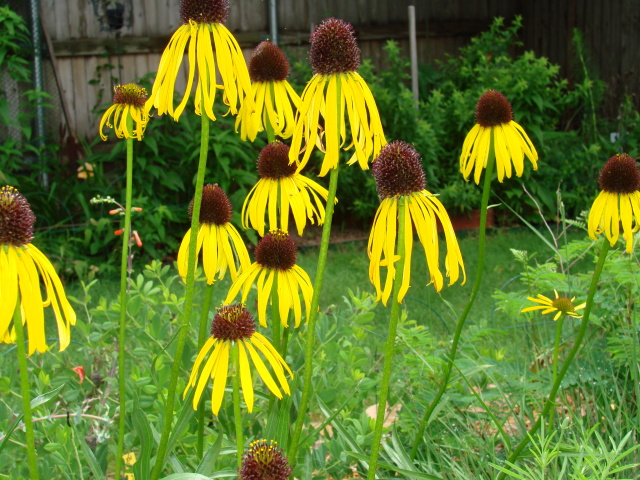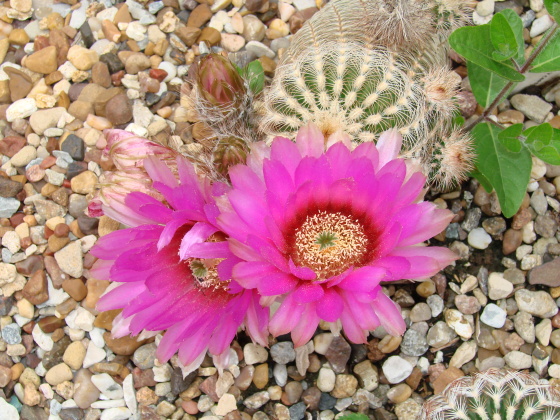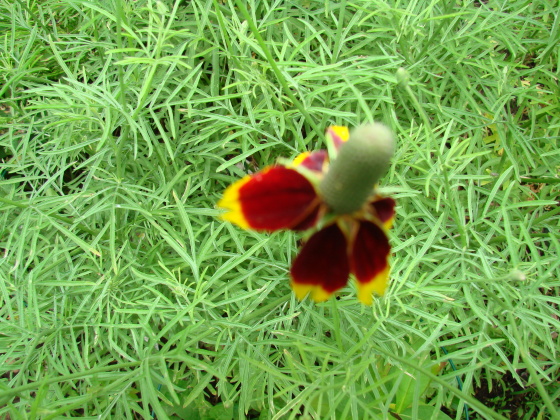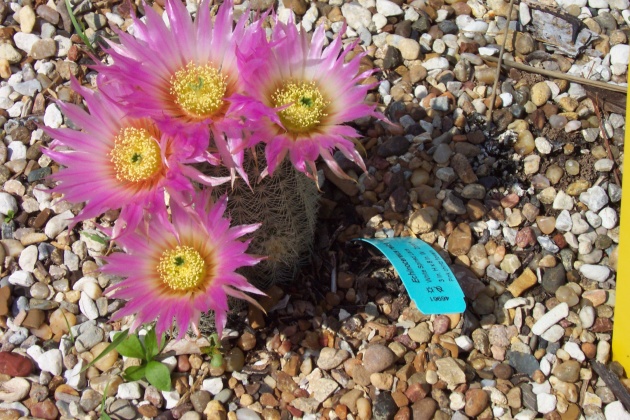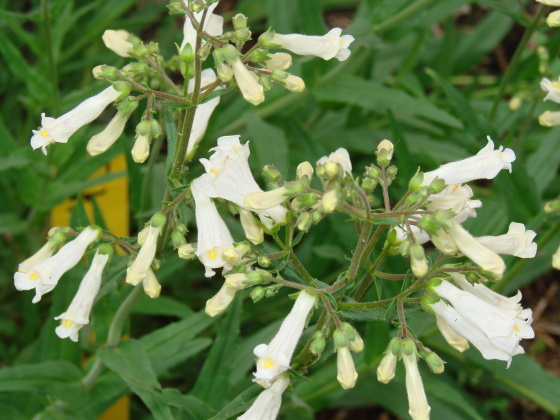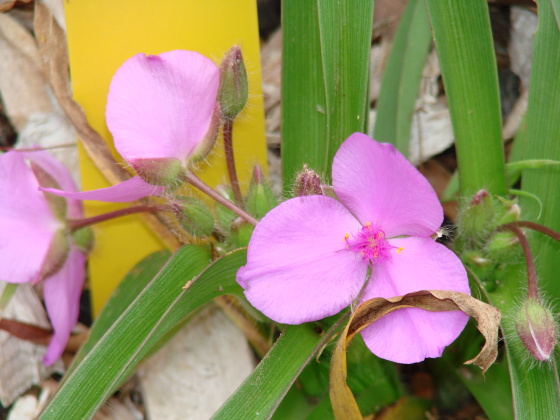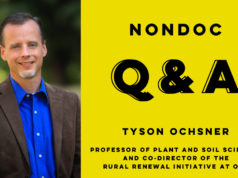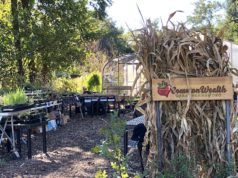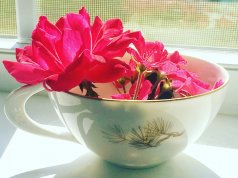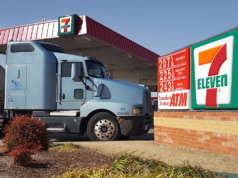Oklahoma must be full of rich gardeners who have excess money to burn and unlimited energy to expend in their gardens. Many seem to have little concern for water conservation, care little about habitat loss for our state’s birds, butterflies and insects, and only wish to have gardens like their neighbors.
There is no doubt that we can grow just about anything in this state, provided we expend the cost and effort of fertilizers, insecticides and fungicides. Plus, of course, we must use the extra water that might be necessary to grow these exotic plants.
But why continue in this fashion? Why don’t people grow more native plants in our state instead? Why not be daring and grow something your neighbors don’t have in their yards?
With the calendar flipping to January, now is the time to develop our 2016 gardening and landscaping plans. If you’re an Oklahoman interested in planting local plants, you’ve come to the right place. With many people using more water, fertilizer and money than they need to in their gardens, let’s look at Oklahoma’s ecosystems and find some native options that offer many benefits.
Oklahoma’s ecosystems
Oklahoma is a unique state, being located at the intersection of four major ecosystems and possessing within its boundaries 13 smaller ecosystems. The state ranks third in the number of plant families it possesses. We have more species of native plants than one could ever grow in the average garden. We also have several excellent sources for these plants.
When I speak of “native plants,” I mean those that are indigenous to our state, not those introduced from other regions or countries. Unfortunately, few Oklahoma gardeners are fully appreciative of our state’s natural bounty and beauty, including trees, shrubs, herbaceous flowering plants, grasses and cacti.
The following five native Oklahoma plants are personal favorites of mine because they are “happy” here and have adapted to our varied soils, moisture levels, temperatures and winds.
Blanket Flower, Gaillardia pulchella
Every garden should contain Oklahoma’s state wildflower. A hardy, prolific bloomer throughout the summer and fall, this plant grows from 1 foot to 2.5 feet tall and spreads from 1 foot to 2 feet. The flower heads range from 1.5 inches to 2.5 inches and are reddish-orange with yellow tips. This plant reseeds well and can be very profuse, so you may wish to remove a few of the seed heads before they scatter their seeds. This is a prairie plant that prefers full sun and good drainage. You probably want several of these plants planted near one another.
Pale Purple Coneflower, Echinacea pallida
I find this species most attractive of the echinaceas. This is an elegant plant with long, delicately drooping white florets perched on a stem one foot to 30 inches long. The florets become slightly pink as the season progresses. There may be several stems to each plant with long linear green leaves. This is considered a long-blooming perennial that needs full sun and good drainage. A cluster of the plants makes for a good show.
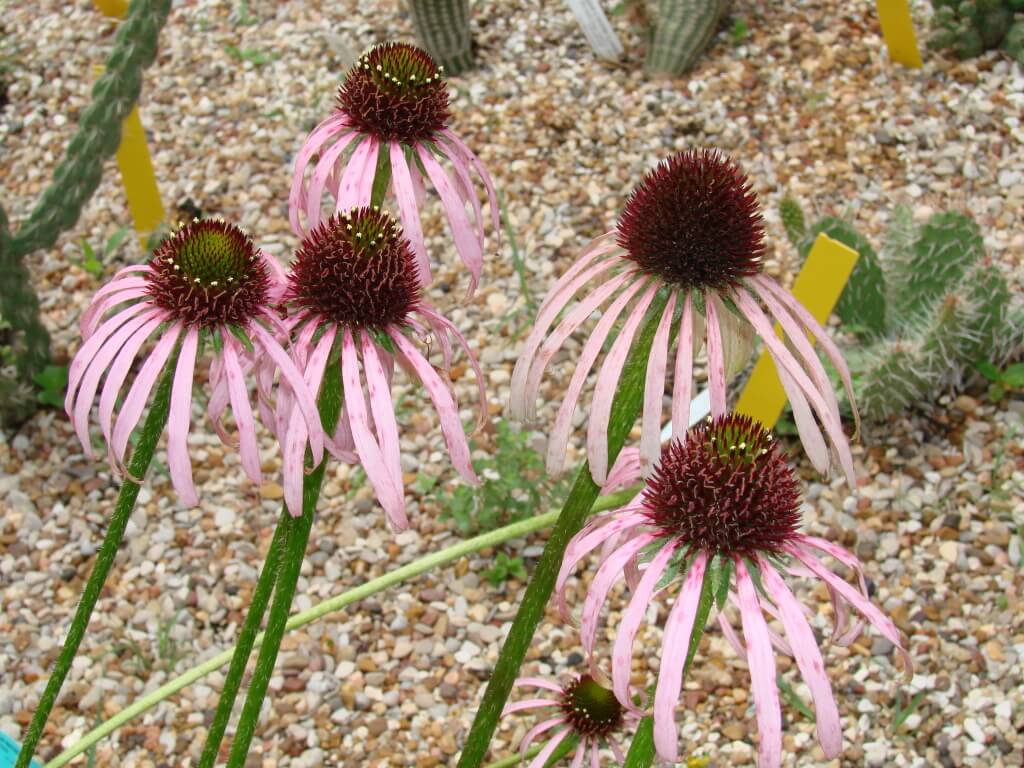
Butterfly Milkweed, Asclepia tuberosa
This spectacular plant is a butterfly magnet. Emerging late spring, it possesses clusters of small showy orange flowers on one-foot to two-foot stalks from May to August. Possesses shiny green leaves and is common to dry soils throughout much of the state. The plants possess long tuberous roots and are best left undisturbed once established. Avoid planting annual plants adjacent to this plant. I would suggest at least three plants planted together.
Little Bluestem Grass, Schizachyrium scoparium
Every garden needs a specimen of one of our widespread and hardiest native grasses. This clump-forming plant possesses one-foot to 16-inch light green blades associated with two-foot to four-foot stems bearing fuzzy flowers and seed heads. This plant is great in the garden during the fall and winter for its notable brown to pink color. This makes a great specimen plant in the garden or to line beds and walkways.
Snow-on-the-Mountain, Euphorbia marginata
Another great, standout-specimen plant. If you enjoy variegated leaves, this plant is for you. It possesses stout, erect one-foot to 3.5-feet tall branched stems. The small white flowers are rather inconspicuous; the dazzling green and white bracts (or leaves) are the feature of this plant. I have received more questions and comments about this plant than any other in my garden. I tell people that, as they drive through the rural areas of the state, take occasional looks at the plants growing on our prairies, pastures and roadsides. This plant is a common sight.
Many other native plants can offer a beautiful array of flowers as well:
Caring for native plants
Although native plants are hardy, they do need consideration when they are planted in our yards and gardens just as are all our garden plants.
One must be conscious of considerations of exposure, soil type, moisture, and drainage. Most plants do like their feet immersed for long periods in moist or wet soils. This is particularly true for many of our native plants. Drainage is important as is sufficient sunlight.
Native plants do need water when planted and perhaps additional watering before they become established. Little or no fertilizer depending upon soil conditions and plant needs. Most people tend to over water, and over fertilize their yards and gardens.
One major reason for considering these plants as members of our “household” is that many are perfect candidates for xeriscape gardens. Xeriscape basically implies low maintenance and minimal fuss. Since these plants are true native Oklahomans, they are “tough.” They have learned how to survive in our state long before we arrived and drew artificial boundaries.
Unlike various introduced plants, these are not pantywaists that require pampering. Once natives are established in our gardens, they pretty much take care of themselves. As with all plants, they need to be placed in appropriate growing conditions. They will need little water other than what nature provides, they will need little-to-no fertilization, and, generally, we will have fewer concerns about nasty pests and fungi destroying our plants. In addition, because these plants are part of the natural environment, critters such as butterflies, bees and birds are familiar with them and have adapted to their presence and their uses for food and shelter. What more could we want from our gardens and plants?
Last, buying these plants from reputable sellers helps support local and regional businesses. As we begin to involve ourselves with our friendly “natives,” we also start to become more sensitive to the fragile nature of the ecosystem around us, and we begin to gain an interest and a respect for our natural environment. The current crisis surrounding Monarch butterflies clearly demonstrates this issue.
For research-based information on gardening and yard maintenance, contact your local county extension office. For information on native plants, contact the Oklahoma Native Plant Society.








